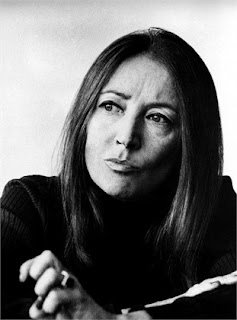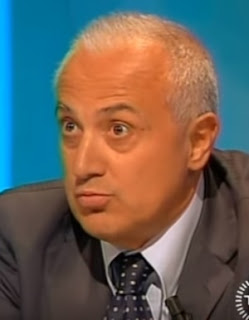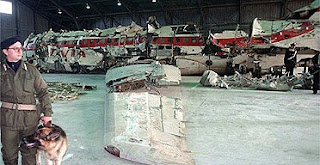‘Favourite niece’ who inherited Gianni fortune
 |
| Allegra Versace at a show in Milan with her mother, Donatella |
The heiress Allegra Versace, owner of half the Versace
fashion empire, was born on this day in 1986 in Milan.
The daughter of Donatella Versace, the company’s chief
designer and vice-president, she was the favourite niece of Gianni Versace, who
founded the fashion house in 1978.
When Gianni was shot dead outside his mansion in Miami in
July 1997, Allegra was just 11 years old but could look forward to becoming immensely
rich after it was announced that her uncle had willed his share of the
business, amounting to 50 per cent, when she reached her 18th
birthday.
By the most recent valuation of the Versace group, this
means Allegra – now 30 – has a personal fortune worth $800 million. The
remainder of the empire is owned by her mother, who has 20 per cent, and
Gianni’s older brother, Santo Versace, who has 30 per cent.
Yet the promise of wealth and privilege did not bring her
happiness as a young woman. The daughter
of Paul Beck, a former Versace model to whom Donatella was briefly married,
Allegra enjoyed a contented childhood in which she read books and played the
piano given to her as a gift by Sir Elton John, a family friend, but her world was
shattered when her uncle was killed.
A regular visitor to his home in Miami, she reportedly found
out about his death watching a television news bulletin before her mother had a
chance to break the news to her. She is
said to have been inconsolable at the funeral and though her mother sought
counselling for her it did not stop Allegra sliding towards depression.
 |
| Donatella Versace |
By the time she reached adulthood and the riches she had
been promised became real, she had become almost reclusive, rejecting the
family name and, after studying French and art history at the University of
California in Los Angeles, attempting to live in anonymity in New York, where
she worked as a theatre dresser.
She developed anorexia nervosa, telling friends that she
wished she were not a Versace, that she wanted to be no one, but that she could
not escape.
It took until 2011 for Donatella to persuade her daughter to
return to Italy and take up the role her uncle wanted her to fulfil, as a Versace
director, although she still shuns the spotlight and has spent time working
with a designer friend from outside the company, helping to organise shows and
publicity without ever taking centre stage herself.
 |
| The Villa Fontanelle on Lake Como |
Travel tip:
Gianni Versace’s homes included the Villa Le Fontanelle, a
stunning waterfront property on Lake Como, where Allegra often visited him
while he was in Italy. The grounds were designed by the art historian and
landscape architect Sir Roy Strong and inside were a collection of 18th century
paintings, red marble baths and a crystal chandelier that once hung in the
Russian imperial palace in St Petersburg.
As well as 50 per cent of the company, the house was bequeathed to
Allegra in Gianni’s will.
Travel tip:
The headquarters of the Versace empire in Milan is the
Palazzo Versace in Via Gesù, which adjoins the five-star Four Seasons Hotel and
stretches from the main entrance at No 10 towards Via della Spiga. Via Gesù is off Via Montenapoleone, which is
generally recognised as the centre of the Italian high fashion district of
Milan, with virtually every top name having a presence there. The Versace shop is at No 11.












